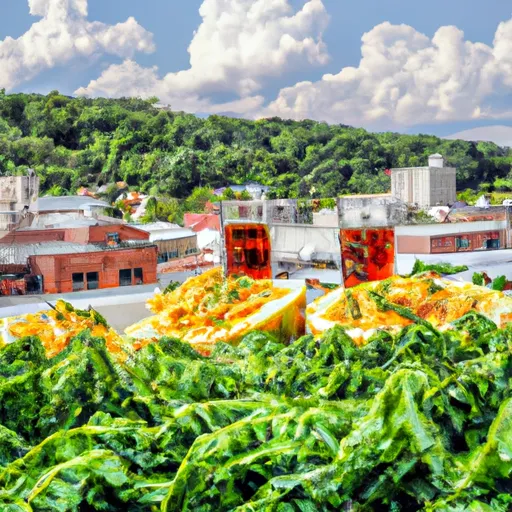-
 Snoflo Premium
Snoflo Premium
Get unlimited access to all our content
With no Ad interruptions! - Start Your Free Trial Login with existing account
Primos-Secane
Eden Index
Climate
9.7
•
Recreation
5.3
•
Community
3.3
•
Safeguard
6.6/10

Primos-Secane is a charming community located in Delaware County, Pennsylvania. The area experiences a humid subtropical climate, characterized by warm summers and cool winters. Average temperatures range from the mid-80s Fahrenheit in summer to the mid-30s Fahrenheit in winter. Precipitation is evenly distributed throughout the year, with an annual average of around 45 inches.
The community is surrounded by several water bodies, including Darby Creek, which flows through nearby parks and offers opportunities for fishing, kayaking, and canoeing. The creek is known for its diverse aquatic life, including various species of fish and turtles.
Primos-Secane is proud to have numerous outdoor recreation opportunities. Residents and visitors can explore the beautiful landscapes of the area through hiking and biking trails in nearby Ridley Creek State Park or explore the natural beauty of Heuser Park. The parks offer facilities for picnicking, sports fields, playgrounds, and even host community events.
Overall, Primos-Secane offers a pleasant climate, access to water bodies, and ample outdoor recreational activities, making it an ideal place for nature enthusiasts and those seeking an active lifestyle.
What is the Eden Index?
The Snoflo Eden Index serves as a comprehensive rating system for regions, evaluating their desirability through a holistic assessment of climate health, outdoor recreation opportunities, and natural disaster risk, acknowledging the profound impact of these factors on livability and well-being.
Climate Health Indicator (CHI): 9.7
Primos-Secane receives approximately
1183mm of rain per year,
with humidity levels near 76%
and air temperatures averaging around
13°C.
Primos-Secane has a plant hardyness factor of
7, meaning
plants and agriculture in this region tend to thrive during the non-winter months.
By considering the ideal temperature range, reliable water supplies, clean air, and stable seasonal rain or snowpacks, the Climate Health Indicator (CHI) underscores the significance of a healthy climate as the foundation for quality living.
A healthy climate is paramount for ensuring a high quality of life and livability in a region, fostering both physical well-being and environmental harmony. This can be characterized by ideal temperatures, reliable access to water supplies, clean air, and consistent seasonal rain or snowpacks.
Weather Forecast
Streamflow Conditions
Lower Delaware
Area Rivers
Lower Delaware
Snowpack Depths
Lower Delaware
Reservoir Storage Capacity
Lower Delaware
Groundwater Levels
Recreational Opportunity Index (ROI): 5.3
The Recreational Opportunity Index (ROI) recognizes the value of outdoor recreational options, such as parks, hiking trails, camping sites, and fishing spots, while acknowledging that climate plays a pivotal role in ensuring the comfort and consistency of these experiences.
Access to outdoor recreational opportunities, encompassing activities such as parks, hiking, camping, and fishing, is crucial for overall well-being, and the climate plays a pivotal role in enabling and enhancing these experiences, ensuring that individuals can engage in nature-based activities comfortably and consistently.
Camping Areas
| Campground | Campsites | Reservations | Toilets | Showers | Elevation |
|---|---|---|---|---|---|
| Parvin State Park | 55 | 72 ft | |||
| Dover AFB Military | None | 25 ft | |||
| Lake Towhee County Park | None | 509 ft |
Nearby Fishing
Nearby Ski Areas
Catastrophe Safeguard Index (CSI):
The Catastrophe Safeguard Index (CSI) recognizes that natural disaster risk, encompassing floods, fires, hurricanes, and tornadoes, can drastically affect safety and the overall appeal of an area.
The level of natural disaster risk in a region significantly affects safety and the overall livability, with climate change amplifying these risks by potentially increasing the frequency and intensity of events like floods, fires, hurricanes, and tornadoes, thereby posing substantial challenges to community resilience and well-being.
Community Resilience Indicator (CRI): 3.3
The Community Resilience Indicator (CRI) recognizes that education, healthcare, and socioeconomics are crucial to the well-being of a region. The CRI acknowledges the profound impact of these elements on residents' overall quality of life. By evaluating educational resources, healthcare accessibility, and economic inclusivity, the index captures the essential aspects that contribute to a thriving community, fostering resident satisfaction, equity, and social cohesion.

